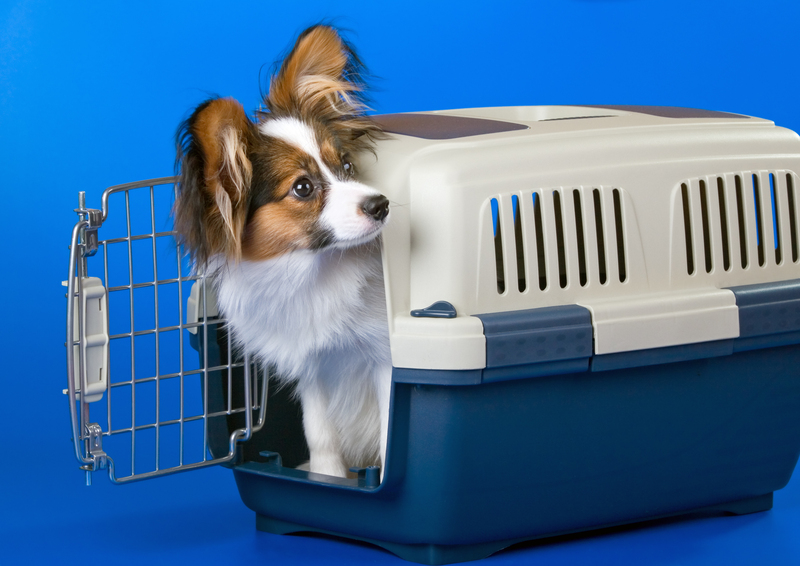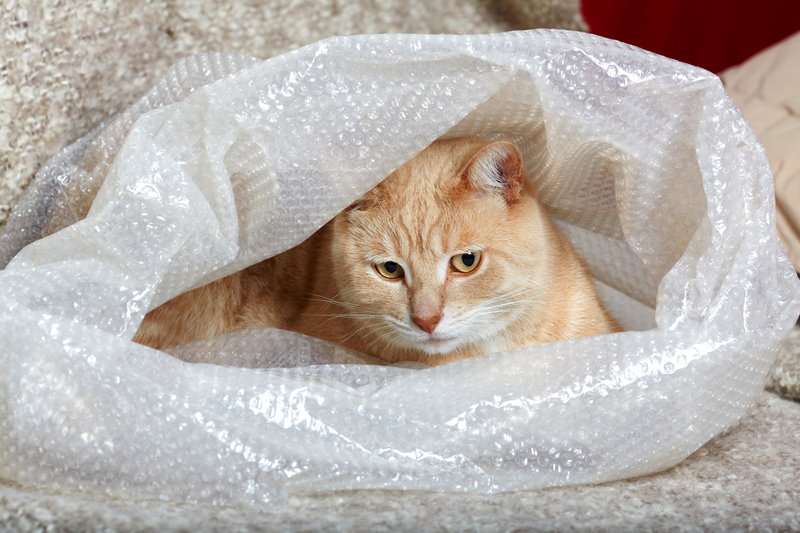Expert tips on transporting your bed and mattress seamlessly
Posted on 25/05/2025
Expert Tips on Transporting Your Bed and Mattress Seamlessly
Moving homes often involves lots of planning and logistics -- especially when it comes to transporting your bed and mattress. These items are not only bulky but also require careful handling to prevent damage during transit. Whether you're making a big move across the country or just switching to a new apartment nearby, safeguarding your sleeping setup is essential for comfort and health. In this comprehensive guide, we'll dive into expert tips for moving your bed and mattress seamlessly, minimize hassle, and ensure a smooth transition to your new home.

Why Proper Bed and Mattress Transport Matters
While it might seem tempting to just toss your mattress and bed frame into a truck, improper handling can lead to:
- Mattress deformation or damage (sagging, tears, or stains)
- Bed frame scratches and dents
- Reduced lifespan of your sleep products
- Hygiene concerns from exposure to dirt and debris
- Back injuries from lifting incorrectly
Seamless transport ensures your investment remains intact and you can sleep soundly in your new residence.
How to Prepare Your Bed and Mattress for Moving
1. Gather the Right Packing Materials
Preparation is key when moving beds and mattresses. Start by collecting essential supplies:
- Mattress bags or covers: These protect against dust, moisture, and tears.
- Moving blankets: Cushion your bed frames to prevent scratches.
- Bubble wrap: Useful for fragile headboards or footboards.
- Sturdy straps or ropes: Keep everything secure during transport.
- Hand tools: Wrenches and screwdrivers for dismantling the frame.
- Packing tape: Seal covers and secure loose parts.
2. Disassemble Bed Frames Carefully
Avoid damage and unwieldy lifting by taking apart your bed frame. Follow this process:
- Remove bedding and mattress.
- Detach the headboard and footboard. Keep all screws and bolts in a labeled bag.
- Disassemble slats or supporting boards.
- Take photos before disassembly for easy reassembly later.
- Wrap each component in moving blankets or bubble wrap.
3. Protect the Mattress with a Quality Bag
A good mattress bag is crucial for safe mattress transport. Choose one that is:
- Waterproof and tear-resistant
- Appropriately sized for your mattress (twin, queen, king, etc.)
- Equipped with handles for easier lifting
Before bagging your mattress, clean it by vacuuming both sides to minimize dirt during the move. Once bagged, seal with tape along the opening for added protection.
Practical Mattress Moving Tips
1. Enlist Help
Mattresses and bed frames can be surprisingly heavy. Two or more people should always handle these items. This will prevent injury and accidental drops.
2. Move the Mattress Upright
When moving a mattress, keep it upright on its side if possible. This saves space and makes it easier to navigate through hallways and doorways. However, avoid bending or folding memory foam or inner-spring mattresses, as this can permanently damage their structure.
3. Use Mattress Sliders or Dolly
For larger or heavier mattresses, invest in furniture sliders or a moving dolly. Place the mattress on the slider or dolly to easily transport it across floors without lifting.
4. Secure Items in Your Moving Vehicle
Prevent shifting and bouncing during transport by securing your mattress and bed frame tightly. Use straps or ropes to hold items in place. Never place heavy items on top of your mattress to avoid warping or damage.
Transporting Different Types of Beds and Mattresses
Memory Foam Mattress
These are flexible but should not be folded sharply. Roll if the manufacturer allows; otherwise, keep them flat and protected. Exposure to extreme heat can break down the foam, so avoid leaving them in hot, enclosed spaces for too long.
Innerspring Mattress
Keep flat and avoid folding, as bending can damage the coil system. Always transport in an upright, vertical position when possible to maintain structural integrity.
Hybrid and Pillow Top Mattress
These are typically heavy and thicker. Use extra help and ensure the mattress is fully protected with a thick, high-quality moving bag.
Platform Beds and Adjustable Bases
Disassemble according to manufacturer guidelines and use original packaging if available. For electric components, secure cords and controls in labeled bags and avoid exposing to moisture.
Protecting Your Bed Frame During a Move
- Wrap all wooden, metal, or upholstered parts with thick moving blankets or bubble wrap.
- Label all hardware bags (bolts, washers, screws) and tape them to the frame for easy setup.
- Don't overtighten bolts during reassembly -- this can strip the hardware or crack the frame.
For antique or valuable beds, consider hiring professional movers with experience handling delicate furniture.
Professional Movers vs. DIY: Weighing the Options
Deciding between hiring professional movers for mattress transport and doing it yourself depends on your time, budget, and comfort level.
Choosing Professional Movers
- Experience: Movers have the right tools and techniques.
- Insurance: Your items are covered if something goes wrong.
- Efficiency: They can move all your items in less time.
- Less strain: Avoid injury or damage by letting experts do the heavy lifting.
The DIY Approach
- Cost Savings: Labor fees are eliminated.
- Control: You oversee the move and handle your items personally.
- Learning Experience: Gain valuable skills for future moves.
If you have fragile, antique, or high-value beds or mattresses, hiring professionals is the safest bet.
Common Mistakes to Avoid When Moving Beds and Mattresses
- Not using a mattress bag: Exposes your mattress to stains and tears.
- Transporting on top of the car: May lead to wind damage or even loss if not secured.
- Bending or folding mattresses unnecessarily: Can cause permanent damage.
- Leaving hardware behind: Always bag and label your hardware immediately after disassembly.
- Forgetting measurements: Check if your mattress and frame fit through doors, halls, and stairways before moving day.
After the Move: Reassembling and Caring for Your Bed and Mattress
1. Give Your Mattress Time to Air Out
Remove the protective bag as soon as you arrive at your new home. Let your mattress breathe for several hours--this removes any trapped odors or moisture from the move.
2. Inspect for Damage
Check both your bed frame and mattress for tears, dents, or loose hardware. Address any issues immediately for continued comfort and safety.
3. Reassemble Bed Frame Step-by-Step
- Refer to the photos you took during disassembly for guidance.
- Secure all bolts and screws, but never force components that feel misaligned.
- Test stability before placing your mattress on top.
4. Clean Before Use
Wipe down the bed frame and vacuum your mattress one more time to remove any residual dust from transit. For extra peace of mind, use a mattress protector in your new space.
Frequently Asked Questions on Transporting Beds and Mattresses
Can I transport my mattress without a bag?
It is strongly recommended to use a mattress bag or at least cover your mattress with plastic sheeting to protect from dirt, pests, and moisture.
Is it okay to tie my mattress on top of my car?
While seen in movies, this method is risky and not advised. Strong winds can rip the mattress off or cause road hazards. Always use a proper vehicle like a moving van when transporting beds and mattresses.
How do I move a mattress by myself?
For smaller mattresses, use sliders or a dolly. Fold carefully only if the manufacturer says it's safe (usually memory foam only), and never drag the mattress on the ground.
Should I keep my mattress upright or flat during transport?
Keeping an innerspring mattress upright is generally best, while memory foam can be flat. Always check manufacturer instructions for recommended handling.

Extra Tips for Seamless Mattress and Bed Moves
- Measure your new room and entryways beforehand to avoid surprises.
- Mark all bed parts with masking tape: Quickly identify left vs. right or top vs. bottom sections during reassembly.
- Enlist friends or family: Even if you've hired movers, extra help is valuable for reassembly and placement.
- Plan ahead for old mattresses: Arrange for donation, recycling, or disposal before moving day if you're replacing your set.
- Take your time: Rushing increases the risk of damage or injury. Work steadily and methodically.
Conclusion: Make Bed and Mattress Transport Easy and Stress-Free
With a bit of planning and these expert mattress moving tips, you can seamlessly transport your bed and mattress without a hitch. From prepping with the right supplies to proper lifting techniques and reassembly, each step is important for protecting your sleep investment. Whether doing it yourself or working with pros, always prioritize safety, cleanliness, and correct handling for a hassle-free move.
Ready to move? Use this checklist for a smooth, seamless experience and enjoy restful nights wherever you land!



